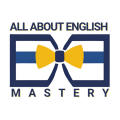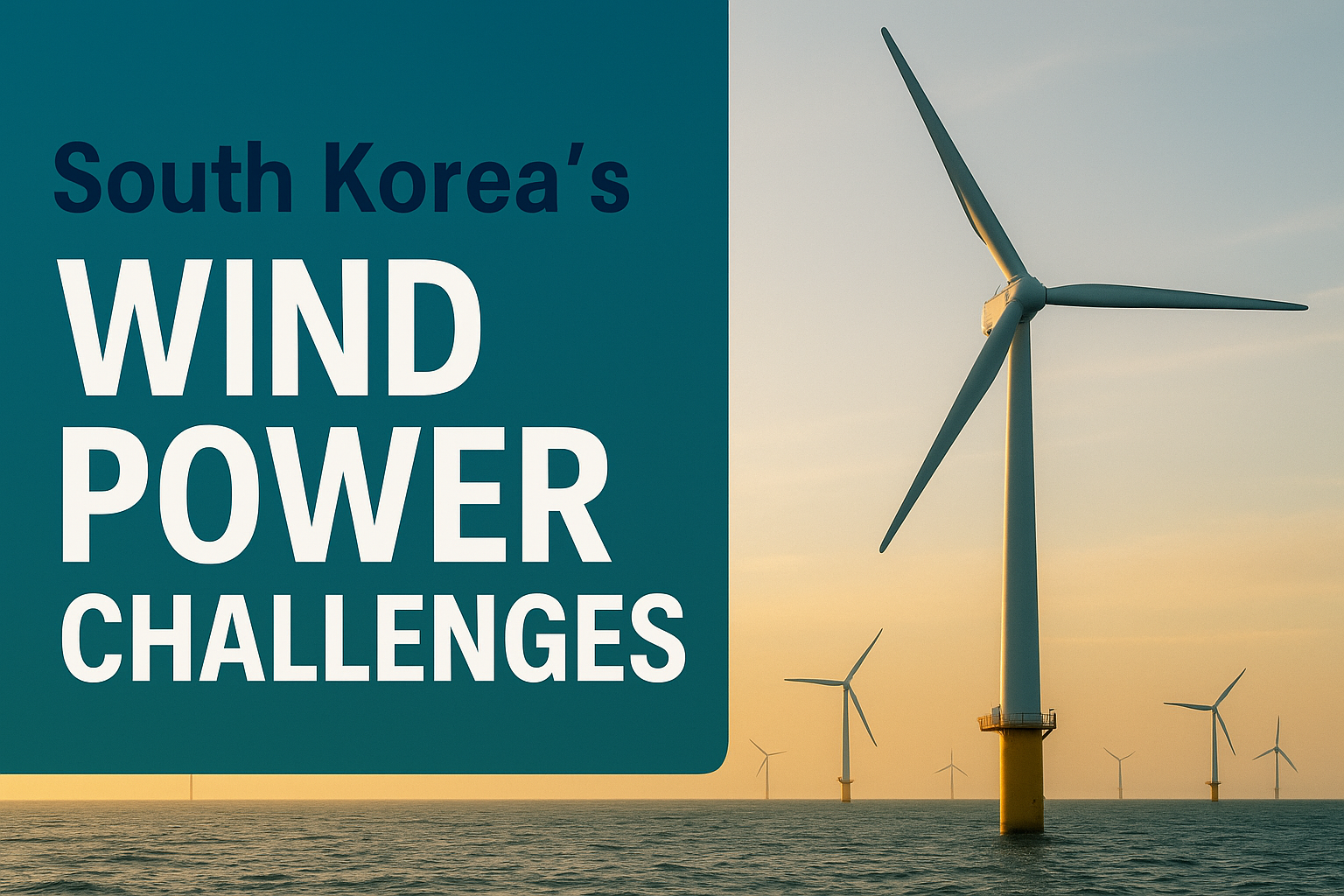South Korea’s Wind Power Journey: Ambitious Goals Amidst Big Challenges
Intermediate | July 19, 2025
✨ Read the article aloud on your own or repeat each paragraph after your tutor.
South Korea is setting very ambitious goals for renewable energy, especially wind power. The country is currently facing several South Korea Wind Power Challenges that must be addressed to meet its goals. The country aims to have at least 14.3 gigawatts (GW) of offshore wind capacity by 2030, a huge jump from just 0.1 GW in 2022. By 2038, the goal is for renewable energy to make up 29.2% of the total energy mix, a significant increase from 8.9% in 2022. With its favorable geography for offshore wind, South Korea certainly has great potential.
Big Plans, Slow Start
However, despite these high targets and natural advantages, developing wind power in South Korea faces many significant hurdles. Progress has been slower than hoped, and many projects struggle to get off the ground.
Why Is Progress Slow?
Red Tape and Regulations
Several key issues stand in the way of South Korea’s wind power ambitions. One major problem is the regulatory and permitting complexities. Getting permission for wind projects is a long and often unpredictable process. There isn’t a single clear path for reviews, and the Ministry of National Defense’s checks on military operability add extra difficulty, increasing costs and uncertainty for developers.
Weak Grid, Strong Demand
Another big obstacle is grid limitations. South Korea’s current electricity transmission and distribution systems aren’t strong enough to handle large amounts of wind power, especially from offshore farms. This can lead to grid congestion, meaning that even if wind power is produced, it can’t always be delivered where it’s needed. Plans to expand the grid are slow, partly because of the way the power market is organized and also because local communities sometimes don’t want new power lines near them.
Local Resistance
Stakeholder opposition also plays a significant role in slowing down projects. Fishing communities, in particular, often protest against wind farm developments. They worry about the impact on their livelihoods and feel that their concerns are not properly heard or that benefit-sharing models are inadequate. This strong local opposition can delay or even stop projects entirely.
Missing Pieces in the Supply Chain
Furthermore, South Korea’s nascent supply chain and infrastructure for offshore wind are still developing. The country lacks specialized equipment, large installation vessels, and suitable port facilities needed for massive offshore wind projects. There’s also a clear need for more skilled technicians and a larger trained workforce to build and maintain these complex systems. Finally, wind power in South Korea is quite expensive compared to other countries, partly due to rising costs and the involvement of less experienced contractors. Policy inconsistency also adds to the challenge, as past renewable energy targets haven’t always been met, and some critics say government support schemes aren’t ambitious enough.
Looking Ahead: Recent Efforts
New Plans and Policy Pushes
Despite these challenges, South Korea is not giving up and has made some recent moves to accelerate progress. On July 16, 2025, the government launched a special task force to create “RE100” industrial complexes. These complexes will be powered entirely by renewable energy, aiming to balance regional energy needs and speed up the energy transition. This task force plans to develop strategies and special laws to attract corporate investment.
Investment and Industry Momentum
Additionally, in May 2025, South Korea’s Energy Agency announced competitive bidding for 1.25 GW of fixed-bottom offshore wind projects, with more tenders for floating and onshore wind planned. The government also plans to invest 2.7 trillion won (\$1.9 billion) in 2025, an increase from 2024, focusing on advanced floating wind systems and next-generation turbines. Furthermore, the Ministry of Trade, Industry and Energy (MOTIE) has released plans and roadmaps in May and August 2024, showing a government-led push to increase renewable energy annually and support significant offshore wind development in the near future.
South Korea Wind Power Challenges: Conclusion
In conclusion, South Korea is striving to overcome considerable hurdles to achieve its ambitious wind power goals. While regulatory complexity, grid limitations, local opposition, and supply chain issues pose significant challenges, recent government initiatives and investments show a strong commitment to expanding renewable energy and building a greener future. The journey is complex, but the determination appears strong.
Vocabulary
- Ambitious (adjective): Having or showing a strong desire and determination to succeed.
- Example: “South Korea has ambitious goals for wind power development.”
- Curtailment (noun): The action of reducing or restricting something.
- Example: “Grid limitations can lead to the curtailment of wind power, meaning less electricity reaches homes.”
- Nascent (adjective): (Especially of a process or organization) just beginning to come into existence and showing signs of future potential.
- Example: “The country’s nascent supply chain for offshore wind needs more development.”
- Inconsistent (adjective): Not staying the same throughout; not in agreement with something.
- Example: “Policy inconsistency can make it difficult for companies to plan long-term investments.”
- Pipeline (noun): A channel or system through which something (such as information, money, or goods) is conveyed. In this context, a list of projects planned for the future.
- Example: “South Korea has a pipeline of 21.3 GW of planned offshore wind capacity.”
- Unpredictable (adjective): Not able to be foreseen or known in advance; uncertain.
- Example: “The permitting process for wind farms is often long and unpredictable.”
- Congestion (noun): The state of being crowded and obstructed.
- Example: “Inadequate grid systems cause congestion, making it hard to transmit power.”
- Opposition (noun): Strong disagreement with or resistance to something.
- Example: “Local opposition, especially from fishing communities, can delay projects.”
- Underdeveloped (adjective): Not sufficiently developed; primitive or stunted.
- Example: “The local supply chain is underdeveloped, lacking specialized equipment.”
- Legislation (noun): Laws, considered collectively.
- Example: “The task force plans to draft special legislation to support new energy complexes.”
Discussion Questions (About the Article)
- What is South Korea’s main goal for offshore wind capacity by 2030?
- Name three challenges South Korea faces in developing wind power.
- How does local opposition, especially from fishing communities, impact wind power projects?
- What is the “RE100” industrial complex initiative trying to achieve?
- What recent government actions show a commitment to expanding wind power despite the challenges?
Discussion Questions (About the Topic)
- Why do you think it’s important for countries to develop renewable energy sources like wind power?
- What are some advantages of wind power compared to other energy types, such as fossil fuels?
- If you were a policymaker in South Korea, what would be your top priority to accelerate wind power development?
- How can governments and developers work together more effectively with local communities to reduce opposition to new energy projects?
- Do you think South Korea will successfully meet its ambitious renewable energy targets by 2038? Why or why not?
Related Idiom
Against the wind
- Meaning: Facing difficulties or strong opposition; doing something difficult or unpopular.
- Example: “South Korea is developing its wind power industry against the wind, facing many challenges like high costs and local opposition.”
📢 Want more tips like this? 👉 Sign up for the All About English Mastery Newsletter! Click here to join us!
Join the English Mastery Club — your place to practice, grow, and connect with others mastering English just like you!
Follow our YouTube Channel @All_About_English for more great insights and tips.
This article was inspired by: July 16 2025 – Yonhap News Agency


